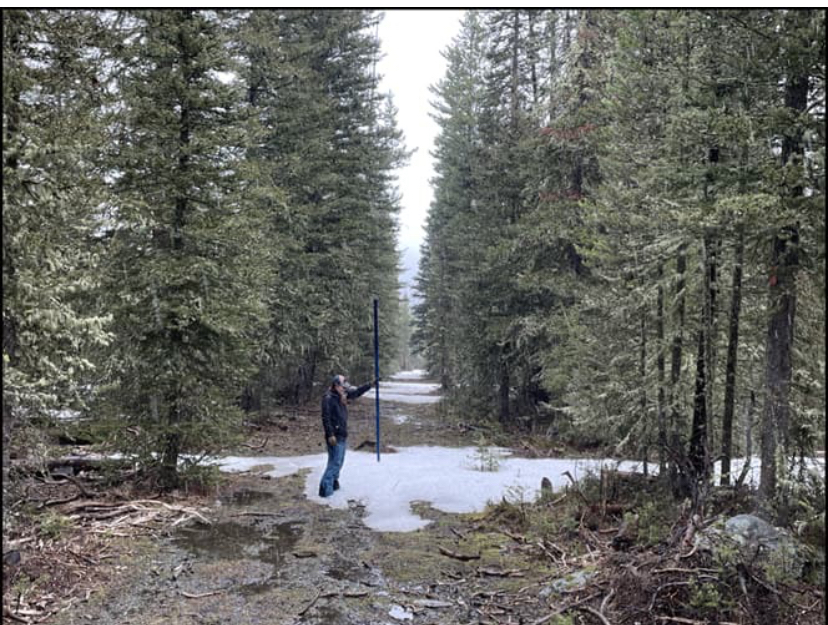BOZEMAN, Mont., May 7, 2024 – Well above normal precipitation during April was needed given the meager snowpack conditions experienced this year. Total monthly precipitation was above normal last month only in the Powder and Tongue River basins but was not widespread across Montana. “A couple mid-month storms did provide significant snowfall, but April is typically a wet month in Montana, and total precipitation last month did not meet that standard,” said Eric Larson, USDA Natural Resources Conservation Service (NRCS) Water Supply Specialist. April precipitation outside of the Powder and Tongue River basins was about 65-80% of normal with a couple isolated locations that were higher. The Rocky Mountain Front and Upper Missouri near Helena, a region that needed it most, were at the low end of that range.
Spring weather in Montana can be highly variable. It is snowing this week in the mountains, adding to the snowpack across upper elevations in Montana. “It’s not uncommon to have significant snowstorms during May in Montana, particularly east of the Continental Divide. While this storm is helpful, this one storm alone will not likely make up for the water year precipitation deficit across most of western Montana,” said Larson. Water year precipitation is only 75-85% of normal for most of the state. SNOTEL sites in the region extending from near Missoula to the Rocky Mountain Front and around Helena are reporting total water year precipitation that ranks in the 15th percentile or less for a 30–40-year period of record. Northern Wyoming basins and the upper Madison have fared slightly better and are currently at 90-100% of normal water year precipitation.
Given the insufficient precipitation totals during April, widespread snowpack improvements from the beginning of April did not occur. “Keep in mind that a snowpack percentage only represents today’s date. It is a calculation of a given date’s snow water equivalent compared to median for that date and sometimes doesn’t tell the full story of the season,” said Larson. The median snowpack peak date is mid-April in most basins and therefore median values used for snowpack percentage calculations are currently decreasing each day. If the weather stays cool and additional snow accumulation occurs in May, basin wide snowpack percentages will likely increase. “If a percentage in a basin that had a low snowpack all year nears 100% in May, that doesn’t mean a full recovery has been achieved,” said Larson. Snowpack percentages were well below normal most of the 2024 season. Larger snow water equivalent peaks are likely to occur at the highest elevations, but significant snowmelt has occurred at mid-mountain elevations and lower. As of May 1, snowpack percentages across most of Montana range from about 55-75% of normal. The Upper Missouri near Helena and Sun-Teton-Marias are lower at about 40%. The Bighorn and Tongue River basin snowpack is closer to normal at about 80-85%.
May 1 water supply forecasts align with water year precipitation and the resulting snowpack. Currently, they indicate runoff volume will be below normal this summer in most locations. The only exceptions are rivers originating in the southern Absaroka and Wind River mountains, which due to near normal precipitation this year are forecasted to have near to above normal runoff. “Areas of greatest concern are the Shields, Teton, Jefferson, Beaverhead, and Musselshell Rivers which are forecasted to be 35-50% of normal for May-July. The 50% exceedance forecasts for the Smith, Missouri, Blackfoot, Bighole, Clark Fork, and Jefferson are 50-60% of normal,” said Larson. For the Flathead, Clark Fork, Blackfoot, Sun, Missouri, and Yellowstone River basins, the entire range of exceedance streamflow forecasts falls below the median May-July volume for most streams. Meaning, that even with well above normal precipitation during May, below normal runoff volume is expected this season.
A full report of conditions on May 1 can be found in the monthly Water Supply Outlook Report available on the Montana Snow Survey website. In addition, real-time snow survey data can be found at nrcs.usda.gov/montana/snow-survey.



